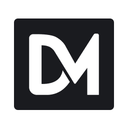
Design Manager Pricing & Plans (2025 Guide)

Design Manager offers a robust platform for interior designers, combining project management and accounting. Its tailored features make it indispensable for design firms seeking efficiency and organization.
- Comprehensive project management features.
- Tailored for interior design firms.
- Integrates accounting and design tasks.
- Steep learning curve initially.
- Limited customization options.
Free plan?
YesStarting price
$74 per month per userWhat is Design Manager?
How Much Does Design Manager Cost?
Design Manager offers a variety of pricing plans to cater to different business needs. Below is a detailed breakdown of Design Manager’s plans, highlighting their key features for various design firms.

Design Manager Pricing Plans
- Integrated purchasing system to streamline orders.
- Robust accounting features for financial management.
- Client portal for seamless communication and collaboration.
- Advanced reporting capabilities for data-driven decisions.
Design Manager Pricing Plans in Detail
Design Manager
The Design Manager plan offers a comprehensive suite of tools designed to manage all aspects of an interior design business. It includes project management, purchasing, accounting, and client portal features, all aimed at enhancing efficiency and productivity. The plan also provides advanced reporting capabilities, allowing businesses to make informed, data-driven decisions. With a focus on streamlining operations, this plan is ideal for businesses looking to scale and optimize their processes.
Top Design Manager Features
Client Management
Managing clients effectively is crucial in the design industry, and Design Manager excels in this area. I found it incredibly useful to have all client information, communications, and project details in one place. You can easily track client preferences, project status, and billing information, which helps in maintaining strong client relationships and ensuring satisfaction. This feature saves time and reduces the risk of miscommunication, making your workflow smoother and more efficient.
Project Tracking
Keeping track of multiple projects can be daunting, but Design Manager simplifies this task. I appreciated how it allows you to monitor project progress, deadlines, and resource allocation all in one dashboard. This feature ensures that you stay on top of your projects, meet deadlines, and manage resources effectively. It’s a game-changer for anyone juggling multiple design projects, providing peace of mind and better control over your work.
Financial Integration
One of the standout features of Design Manager is its seamless financial integration. I loved how it combines accounting tasks with project management, allowing you to handle invoicing, budgeting, and expense tracking without switching platforms. This integration not only saves time but also reduces errors, ensuring that your financial records are accurate and up-to-date. It’s a must-have for design firms that want to maintain financial transparency and control.
Inventory Management
Managing inventory is often a headache, but Design Manager makes it straightforward. I found it incredibly helpful to track inventory levels, manage orders, and oversee product availability all within the same system. This feature ensures that you never run out of essential items and can plan purchases effectively. It’s particularly beneficial for design firms that handle a lot of physical products, providing a clear overview of stock levels and needs.
Time Tracking
Accurate time tracking is essential for billing and project management, and Design Manager delivers on this front. I appreciated how easy it was to log hours, assign them to specific projects, and generate reports. This feature helps in ensuring that all billable hours are accounted for, improving billing accuracy and client trust. It’s a valuable tool for any design firm looking to optimize time management and enhance productivity.
Reporting and Analytics
Having access to detailed reports and analytics is crucial for making informed business decisions. Design Manager provides comprehensive reporting tools that I found invaluable for tracking project performance, financial health, and client satisfaction. These insights help you identify areas for improvement and make strategic decisions to grow your business. It’s a powerful feature that turns data into actionable insights, driving better outcomes for your firm.
Task Management
Organizing tasks efficiently is key to successful project management, and Design Manager excels in this area. I loved how it allows you to create, assign, and track tasks with ease, ensuring that nothing falls through the cracks. This feature helps in maintaining a clear overview of what needs to be done, who’s responsible, and when it’s due. It’s a lifesaver for busy design teams, keeping everyone aligned and on track.
Vendor Management
Dealing with multiple vendors can be challenging, but Design Manager simplifies this process. I found it incredibly useful to have all vendor information, orders, and communications in one place. This feature helps in maintaining strong vendor relationships, ensuring timely deliveries, and managing costs effectively. It’s a valuable tool for design firms that rely on external suppliers, providing a clear overview of vendor interactions and performance.
Document Management
Keeping track of documents is often a hassle, but Design Manager makes it easy. I appreciated how it allows you to store, organize, and access all project-related documents in one place. This feature ensures that you have all the information you need at your fingertips, reducing the risk of lost or misplaced documents. It’s a must-have for design firms that handle a lot of paperwork, providing a streamlined and efficient document management solution.
Budget Management
Staying within budget is crucial for any project, and Design Manager provides the tools to do just that. I found it incredibly helpful to set budgets, track expenses, and monitor financial performance all within the same platform. This feature ensures that you have a clear overview of your financial situation, helping you make informed decisions and avoid overspending. It’s a valuable tool for design firms looking to maintain financial control and transparency.
Proposal Generation
Creating professional proposals is essential for winning new business, and Design Manager makes this process seamless. I loved how it allows you to generate detailed proposals quickly, complete with project details, timelines, and costs. This feature helps in presenting a polished and professional image to clients, increasing your chances of securing new projects. It’s a must-have for design firms looking to impress clients and grow their business.
Mobile Access
Being able to access your projects on the go is a huge advantage, and Design Manager offers robust mobile access. I appreciated how easy it was to check project status, update tasks, and communicate with clients from my mobile device. This feature ensures that you stay connected and productive, no matter where you are. It’s a game-changer for busy design professionals who need to manage their work on the move.
Who Is Design Manager Best For?
Design Manager is perfect for small to medium-sized interior design firms seeking to streamline their project management and accounting processes. With features like client management, project tracking, and financial integration, it enhances operational efficiency and allows designers to focus on creativity.
- Ideal for interior design firms.
Design Manager is tailored for interior design firms that need a comprehensive solution to manage projects and finances. Its features are specifically designed to handle the unique challenges of the design industry, making it a valuable tool for firms looking to enhance their operational efficiency.
- Great for project-focused teams.
For teams that prioritize project management, Design Manager offers tools to track progress, manage resources, and ensure timely delivery. Its project-focused features help teams stay organized and meet client expectations efficiently.
- Perfect for financial integration.
Design Manager excels in integrating financial tasks with project management, making it ideal for firms that need to keep a close eye on budgets and expenses. Its financial tools help maintain transparency and control over project costs.
Frequently Asked Questions
 What pricing plans does Design Manager offer?
What pricing plans does Design Manager offer?
 Is there a free trial available for Design Manager?
Is there a free trial available for Design Manager?
 Are there any discounts available for Design Manager?
Are there any discounts available for Design Manager?
 Can I upgrade or downgrade my Design Manager plan?
Can I upgrade or downgrade my Design Manager plan?
 What payment methods does Design Manager accept?
What payment methods does Design Manager accept?
 Is there a setup fee for Design Manager?
Is there a setup fee for Design Manager?
 Does Design Manager offer customer support for all plans?
Does Design Manager offer customer support for all plans?
 Are there any additional costs with Design Manager?
Are there any additional costs with Design Manager?
 How does Design Manager handle billing and invoicing?
How does Design Manager handle billing and invoicing?
 Can Design Manager be customized to fit my firm's needs?
Can Design Manager be customized to fit my firm's needs?

Martin Lunendonk
Martin Lunendonk is a senior tech writer specializing in website builders, web hosting, and ecommerce platforms. With a background in finance, accounting, and philosophy, he has founded multiple tech startups and worked in medium to large tech companies and investment banking, bringing deep expertise and reliable insights to his software reviews.

